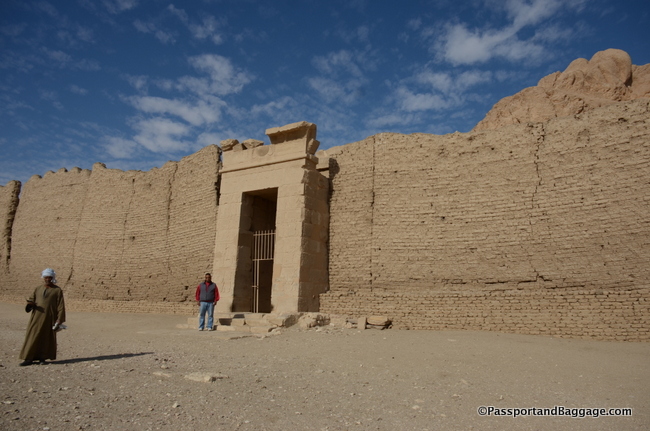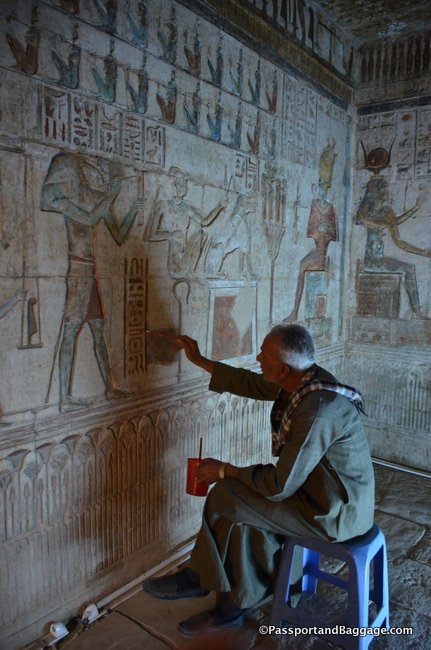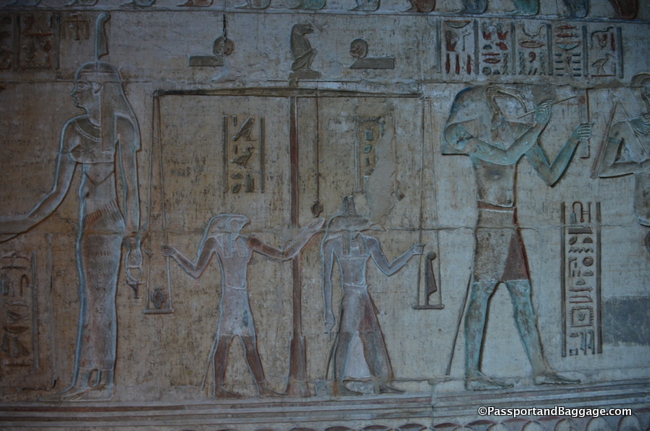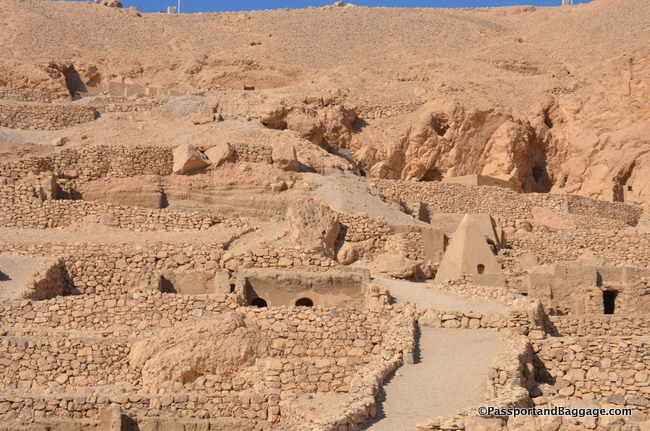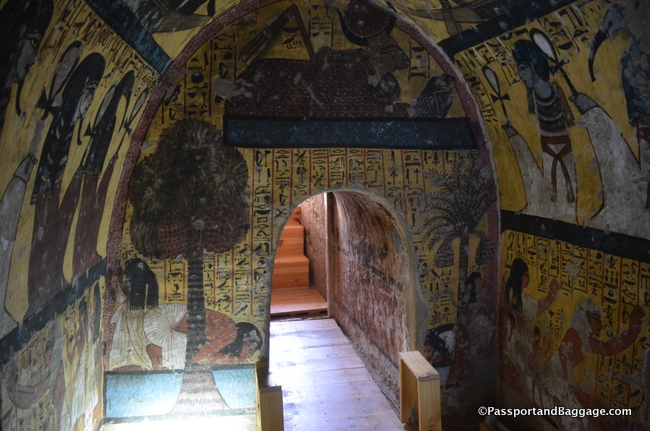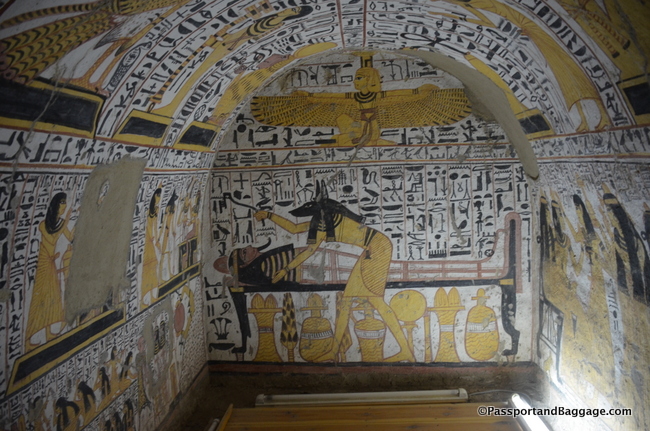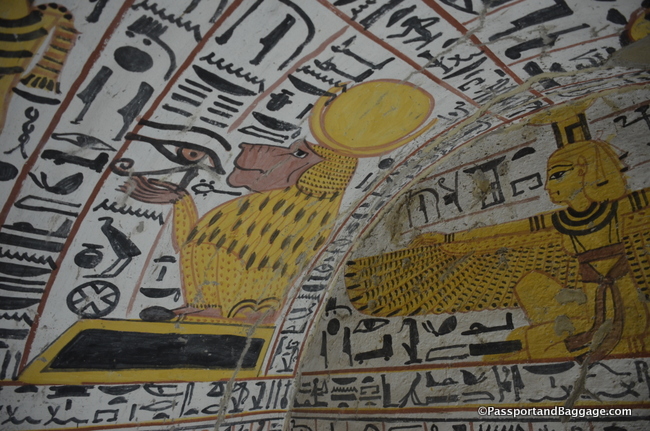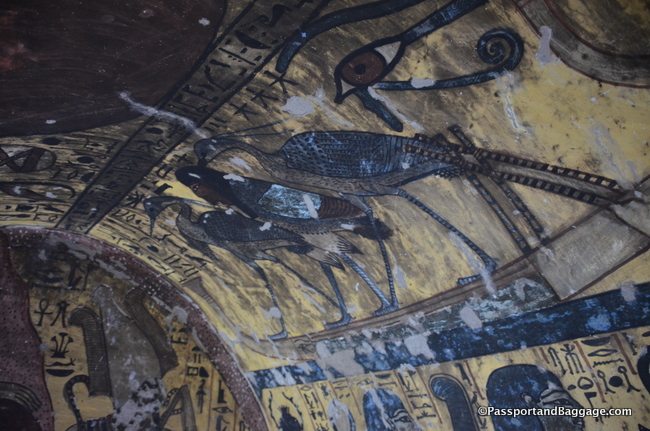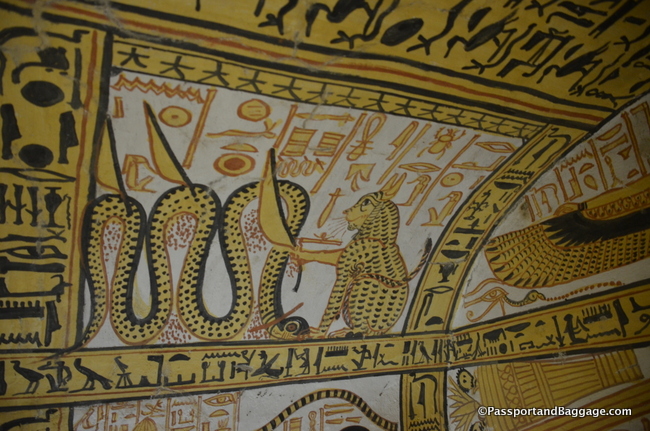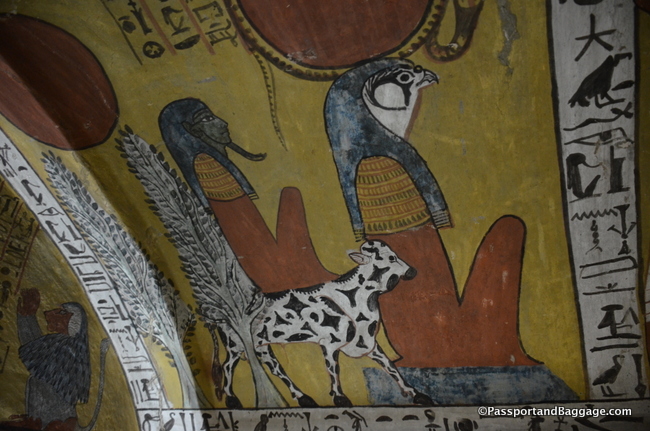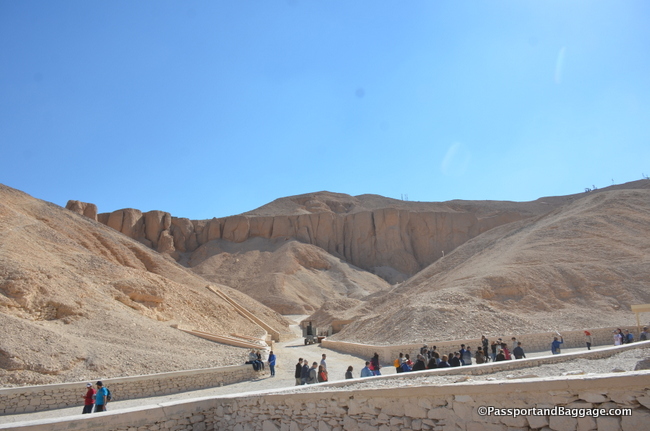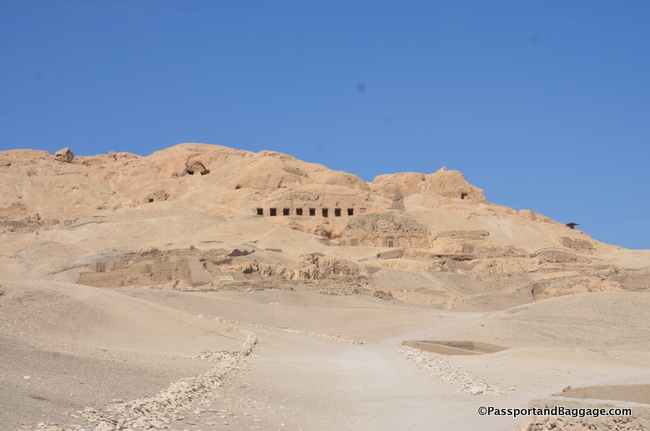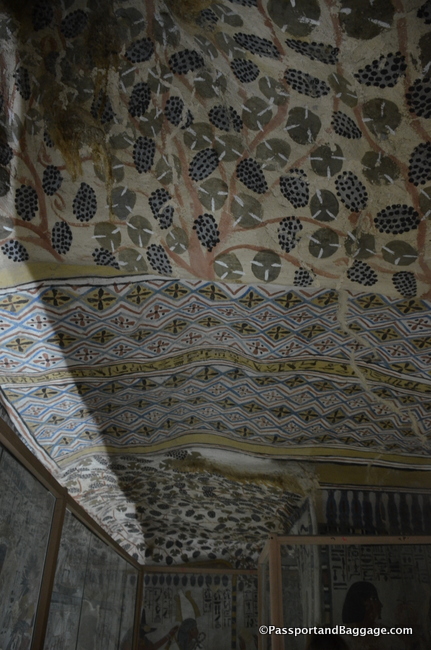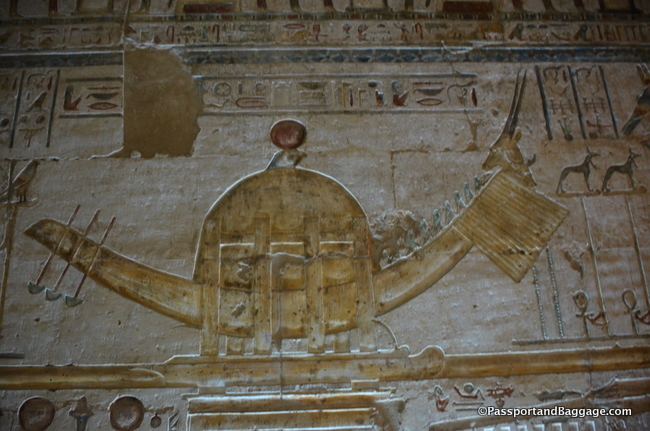December 31, 2018
Deir el-Medina, a UNESCO World Heritage site, is an ancient Egyptian village which was home to the artisans who worked on the tombs in the Valley of the Kings during the 18th to 20th dynasties of the New Kingdom of Egypt (ca. 1550–1080 BCE). The settlement’s ancient name was Set maat “The Place of Truth”, and the workmen who lived there were called “Servants in the Place of Truth”. During the Christian era, the temple of Hathor was converted into a church which is where the Egyptian Arabic name Deir el-Medina (“the monastery of the town”) comes from.
What makes this temple unique is the depiction of the weighing of the heart. This scene was rarely painted in the tombs, so this particular drawing is very special. In the Duat, the realm of the dead, the hearts of the dead were said to be weighed against a single feather of the goddess Ma’at This is why hearts were left in Egyptian mummies while their other organs were removed, as the heart (called “ib”) was seen as part of the Egyptian soul. If the heart was found to be lighter or equal in weight to the feather of Maat, the deceased had led a virtuous life and would go on to Aaru (the Field of Reeds, or the heavenly paradise). A heart which was unworthy was devoured by the goddess Ammit (a goddess with a body that was part lion, hippopotamus, and crocodile) and its owner condemned to remain in the Duat.
The tomb of Nakht Amun, Chiseler of God Amun – 19th Dynasty
Valley of the Queens
I also visited the Valley of the Queens and paid the extra $50 to see the tomb of Nefertari considered one of the most beautiful in all of Egypt – where photos were not allowed.
Valley of the Nobles
Referred to as Tombs of the Nobles, these are the burial places of some of the powerful courtiers and people of the ancient city of Thebes, now Luxor.
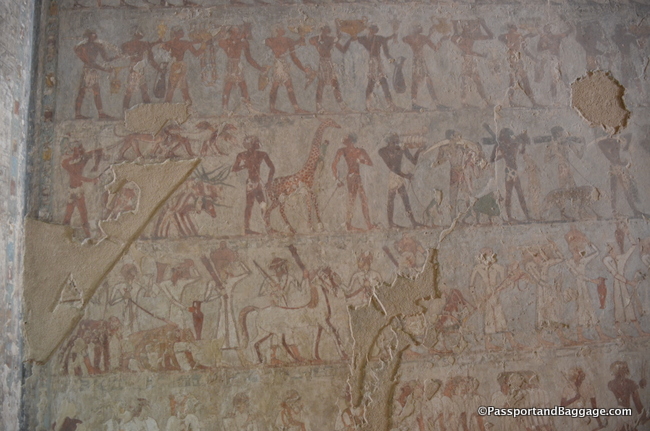
Look closely to see the giraffe, a monkey on a leash, a tiger, all animals from outside of Egypt on the Tomb of Rekhmire 18th Dynasty
Funerary Boats
The Egyptian funerary boat is a typical tomb offering from ancient Egypt, and symbolizes the transport of the dead person or their soul, from life to the afterlife. Egyptians saw death as a boat journey, a trip across their River Nile. In the case of the workers, these boats were simply depicted on the walls, but in the tombs and temples of the pharaohs, there were actual boats.

A reproduction of the Funerary Boat in Edfu Temple is inside the sanctuary in the center of the temple.
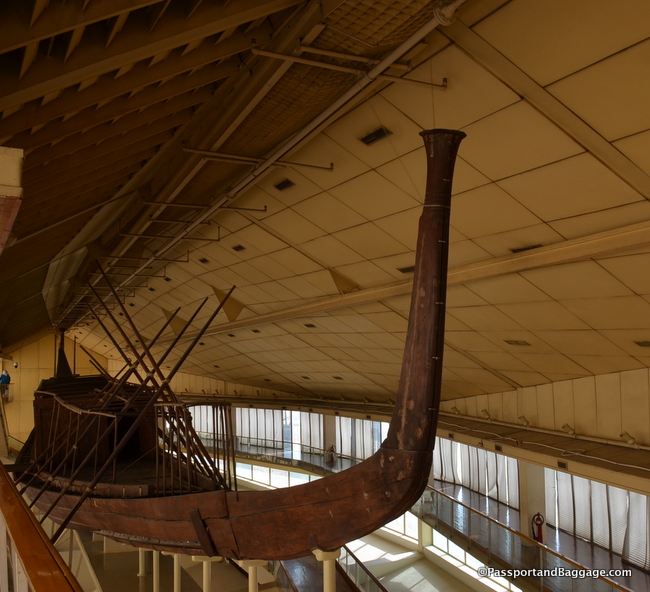
The most famous solar boat is the Khufu ship now preserved in the Giza Solar boat museum beside the Great Pyramid at Giza.
The boats are also life-sized in many cases. Ancient Egyptian solar ships and boat pits were found in many Ancient Egyptian sites. The full-sized ships or boats were buried near Ancient Egyptians’ Pyramids or Temples at many sites. The history and function of the ships are not precisely known. They might be of the type known as a “solar barge”, a ritual vessel to carry the resurrected king with the sun god Ra across the heavens. However, some ships bear signs of being used in water, and it is possible that these ships were funerary barges.
